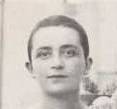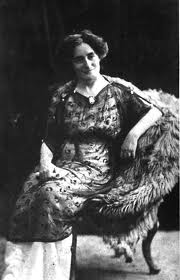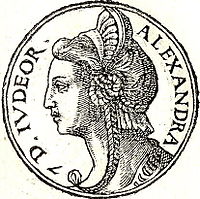Jerusalem is in the grip of marathon fever. Wherever you go in the city you are likely to encounter people of all ages puffing and panting up the steep hills in preparation for the event on March 1st. There are various different tracks depending on how far you want to run ranging from 800 metres for those participants with special difficulties, a 4.2 kilometre non- competitive public run, in which all proceeds go towards the Israel Cancer Organisation, the ten kilometre track, the half marathon and the full monty of just over 42 kilometres. I confess I will not be participating, although I will turn out on the day to cheer on those who are. However, in the next two blogs I will make my own modest contribution to raise the spirits of those who are running by giving them some inspiration. For those of you not in Jerusalem, you too can learn about the visionaries that have helped mold the city into what it is today.
Whilst looking over the routes the various runs follow through the city I was struck by how many of Jerusalem’s streets are named after male figures. As I have a number of female friends pounding the streets, I decided to follow the course of the ten kilometre track and concentrate on ten women who have made their mark on the city whose streets or homes are close to the route. I hope that this will offer encouragement when the going gets tough. Gentleman runners are also welcome to take heart from the following words.
decided to follow the course of the ten kilometre track and concentrate on ten women who have made their mark on the city whose streets or homes are close to the route. I hope that this will offer encouragement when the going gets tough. Gentleman runners are also welcome to take heart from the following words.
Your route starts very close to the Israel Museum, which is perhaps the only museum in the world to have a private home in it. Born in Belgium, Charlotte Bergman was the wealthy widow of an English architect who had moved to the United States. After the Six Day War she immigrated to Jerusalem and became one of the benefactors of the newly opened museum. She came to an agreement with then Mayor Teddy Kollek, that she would donate her vast and important art collection to the museum, which included works by Picasso, Chagall and Henry Moore, on one condition: that she could live with them on the museum campus. Her strange request was honoured and a house modeled on her previous residence in New York was built. Charlotte was a gracious hostess who frequently entertained the literary, musical and artistic crowd and opened her home so that others could enjoy the beautiful objects she had collected. She lived in the house for over 30 years until her death in 2002 when she was in her late nineties. She stipulated in her will that her house should remain untouched for 10 years during which time it should be available for functions and intimate viewings.
A bit further along the route is Bezalel Street, named for the art school which is today located just around the corner. The first female student at Bezalel, who started learning there in 1912 at the age of seventeen, was Miriam (originally Marousia) Nissenholtz, more  commonly referred to by her pseudonym “Had Gadya”. She was by no means welcomed with open arms, in fact the male students staged a protest when they heard she was going to be admitted. There are various theories as to her adopted name one of which comes from the artist Nahum Gutman, a fellow classmate. Gutman claims she was given the nickname “Had Gadya”,meaning “lone kid” in Aramaic and taken from the well-known song we sing on Seder night, because of her agility at climbing the mountains in Jerusalem, like a nimble mountain goat. Nissenholtz herself claimed she adopted it because she felt like a goat amongst the wolves when she started at Bezalel because all her male classmates picked on her. She sported a closely cropped haircut which in the early 1900’s was a first in the Middle East according to Gutman. An attractive woman, she appeared as the face of Bezalel in its early years featuring on a number of posters advertisng the art school. She was a bohemian figure who married three times and lived in various cities throughout the world, settling in Jerusalem’s Ein Karem for a while, before finally departing for Safed. In the 1920’s she lived in Vienna where she learned the art of batik and for a time managed the batik department of Bezalel. She never received the accolades she deserved for her paintings and mysteriously a lot of them have disappeared from the art world, with only a few still held by collectors.
commonly referred to by her pseudonym “Had Gadya”. She was by no means welcomed with open arms, in fact the male students staged a protest when they heard she was going to be admitted. There are various theories as to her adopted name one of which comes from the artist Nahum Gutman, a fellow classmate. Gutman claims she was given the nickname “Had Gadya”,meaning “lone kid” in Aramaic and taken from the well-known song we sing on Seder night, because of her agility at climbing the mountains in Jerusalem, like a nimble mountain goat. Nissenholtz herself claimed she adopted it because she felt like a goat amongst the wolves when she started at Bezalel because all her male classmates picked on her. She sported a closely cropped haircut which in the early 1900’s was a first in the Middle East according to Gutman. An attractive woman, she appeared as the face of Bezalel in its early years featuring on a number of posters advertisng the art school. She was a bohemian figure who married three times and lived in various cities throughout the world, settling in Jerusalem’s Ein Karem for a while, before finally departing for Safed. In the 1920’s she lived in Vienna where she learned the art of batik and for a time managed the batik department of Bezalel. She never received the accolades she deserved for her paintings and mysteriously a lot of them have disappeared from the art world, with only a few still held by collectors.
You have now turned on to Ben Yehuda Street, named for Eliezer Ben Yehuda the reviver of the Hebrew language, who was greatly assisted in this monumental task by his wife Hemdah. Actually, she was the second of his wives. Eliezer had been married to her older sister Devora, who had settled with him in Eretz Israel in 1881 with the first pioneers. She bore him five children, but ten years after their arrival in the country she died of tuberculosis. Shortly afterwards, three of his five children died of diphtheria within a period of ten days. Eliezer proposed to his sister in law, telling her it was his wife’s wish that they marry. Her parents strongly opposed the match, not least because of the fifteen year age gap between them. Eventually they relented and  the couple were wed in March 1892, when Eliezer gave her the Hebrew name Hemdah, meaning “delight” or “pleasure”. Hemdah’s role of wife and mother took on particular significance as theirs was the first (and for a long while the only) Hebrew speaking family, well before the language was rich enough to include all the words required. She once got into serious trouble with her husband for singing Russian nursery rhymes to their children. In addition to involving herself in her husband’s political and professional activities, she also published in her own right as a journalist and author, worked on the production of the newspaper which they ran from their home in Jerusalem and made their house into a salon where intellectuals of the day could gather. In her writings she did much to promote the emancipation and equality of women in Palestine. She died in 1951 having suffered poor health for many years as the result of a fall.
the couple were wed in March 1892, when Eliezer gave her the Hebrew name Hemdah, meaning “delight” or “pleasure”. Hemdah’s role of wife and mother took on particular significance as theirs was the first (and for a long while the only) Hebrew speaking family, well before the language was rich enough to include all the words required. She once got into serious trouble with her husband for singing Russian nursery rhymes to their children. In addition to involving herself in her husband’s political and professional activities, she also published in her own right as a journalist and author, worked on the production of the newspaper which they ran from their home in Jerusalem and made their house into a salon where intellectuals of the day could gather. In her writings she did much to promote the emancipation and equality of women in Palestine. She died in 1951 having suffered poor health for many years as the result of a fall.
As you run along Jaffa Road, you will pass a turning to your left called “Heleni HaMalka” or Queen Helena Street. Helena was queen of Adiabene, in today’s Iraq. Together with her sons Monbaz and Izates she converted to Judaism in around 30 CE, after learning torah from Jews who travelled through her kingdom. She visited Jerusalem for the first time shortly afterwards and found the city experiencing a period of famine. She opened storehouses, fed the poor and performed many generous acts. She visited the city several times and brought expensive gifts on each occasion. Amongst other contributions, she is said to have donated the “nivreshet” to the temple. According to one interpretation in the Mishna, the “nivreshet” was a stylish mirror made from polished gold. It was strategically placed high above the tall entrance to catch and reflect the rays of the early morning sun and was used to calculate the correct time for saying the morning Shema prayer. We can still visit two sites which testify to Queen Helena’s devotion to Jerusalem. The first is on the outskirts of the City of David, where in the Givati parking lot you can see the remains of what is believed to have been her palace. The other is located just under a kilometer north of the Old City walls and is known as the Tomb of the Kings. Like many other places in the city this is actually a misnomer, as it is believed to be the final resting place of Queen Helena and her family. Although she died when she was in Adiabene, she left instructions that her body was to be buried in the mausoleum she had prepared in Jerusalem.
Continuing along your route you will soon meet another queen, Shlomzion, also known as Alexandra Salome. This queen was the wife of two Hasmonean kings (Aristobulus I and then his brother Alexander Yannai/Janneus) and she also ruled in her own right for nine years between 76-67 BCE. By all accounts she was a popular and fair queen winning the admiration and respect of her citizens, which in those tumultuous times of mistrust and intrigue was by no means a foregone conclusion. Some sources say she was the sister of Shimon ben Shetach, a noted Pharisee rabbi, which may explain her support of the group, even though they were persecuted by her husband Alexander. As queen, she skillfully negotiated with the different factions in society to gain acceptance for Hasmonean rule and she restored the Sanhedrin enabling it to administer justice and religious matters once more. She was also politically astute and fortified border strongholds to demonstrate to potential invaders that Judea was well defended. The rabbis relate that under Queen Shlomzion’s rule the country prospered as a reward for her piety. Rain fell only on Shabbat so the workers suffered no loss of pay because of rain falling during their work-time. The richness of the soil was such that the grains of wheat grew as large as kidney-beans; oats as large as olives; and lentils as large as gold coins.
